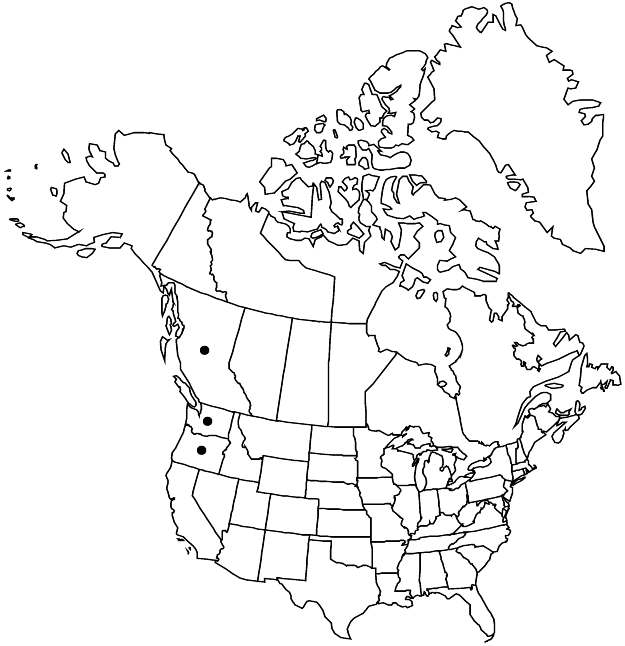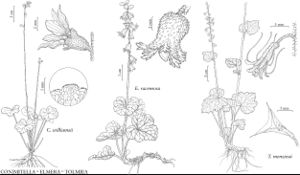Elmera racemosa
in N. L. Britton et al., N. Amer. Fl. 22: 97. 1905,.
Leaves: stipules brownish, 2–5 mm, membranous; petiole 2–10 cm; blade 1–3 cm. Inflorescences not secund, 10–35 cm; bracts stipitate-glandular. Flowers: hypanthium campanulate, 5–9 mm, densely short to medium stipitate-glandular; sepals triangular to oblong, 1–4 mm, apex acute; petals narrowly lanceolate to linear, usually 4–7-lobed, rarely ± unlobed, 3–5 mm; stamens included; styles included, 1–2.5 mm. Capsules brown, widely ovoid. Seeds 125–150.2n = 14.
Phenology: Flowering Jul–Aug.
Habitat: Rocky ledges, cliffs, alpine open slopes, talus slopes
Elevation: 1500-2800 m
Distribution

B.C., Oreg., Wash.
Discussion
Elmera racemosa is found at and above timberline in the Cascades of southwestern British Columbia, in the Okanogan and Cascade ranges, on the Olympic Peninsula, Mount Rainier, and Mount Adams in Washington, and in the Oregon Cascades south to northern Klamath County and adjacent Douglas County. It is occasionally cultivated.
Selected References
None.
Lower Taxa
"full" is not a number.
